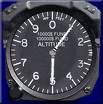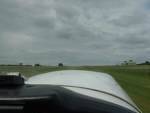 Practice is essential. To ensure minimum IFR proficiency, 14 CFR 61.57 permits you to act as pilot-in-command (PIC) under IFR only if you have practiced several fundamental procedures within the past 6 calendar months.
Practice is essential. To ensure minimum IFR proficiency, 14 CFR 61.57 permits you to act as pilot-in-command (PIC) under IFR only if you have practiced several fundamental procedures within the past 6 calendar months.
Before flying IFR, ensure that you have logged:
- At least six instrument approaches;
- Holding procedures; and
- Intercepting / tracking courses through the use of navigation systems.
If you do not meet these requirements in the prescribed time, or within 6 calendar months afterward, you will need to pass an instrument proficiency check (IPC) with a flight instructor before you can act as PIC under IFR.
Because instrument flying is very demanding – especially in single pilot IFR – your preflight process should also include a review of your fitness for flight (AIM 8-1).
 To be legal for flight under IFR, 14 CFR 91.205(d) states that the aircraft must have certain instruments and equipment, with all required inspections. One way to remember the additional items required for IFR is to think in terms of what you need to aviate, navigate, and communicate.
To be legal for flight under IFR, 14 CFR 91.205(d) states that the aircraft must have certain instruments and equipment, with all required inspections. One way to remember the additional items required for IFR is to think in terms of what you need to aviate, navigate, and communicate.
Aviate:
- Artificial horizon (pitch and bank indicator)
- Rate-of-turn indicator or a separate attitude indicator
- Slip-skid indicator
- Altimeter adjustable for barometric pressure (accurate within +/- 75 feet of field elevation)
- Fuel (45 minute reserve for airplanes; 30 minute reserve for helicopters, per (14 CFR 91.167)
Navigate:
- Direction (heading) indicator
- Clock displaying hours, minutes, and seconds
- VOR (checked within 30 days) 14 CFR 91.171
- Altimeter/pitot-static system checks (14 CFR 91.411)
- Navigational equipment for facilities to be used
Communicate:
The regulations (14 CFR 91.103) demand that you become familiar with "all" available  information before an IFR flight. The “related media” documents below offer tips on evaluating weather in terms of personal minimums and aircraft capability.
information before an IFR flight. The “related media” documents below offer tips on evaluating weather in terms of personal minimums and aircraft capability.
You must also ensure compliance with rules such as the alternate requirement. For airplanes, you do not have to file an alternate if these conditions exist at ETA ± 1 hour:
-
At least 2,000 ceiling
-
At least 3 sm visibility
If an alternate is required, weather reports/forecasts must show that the weather conditions at the ETA will be above the prescribed alternate minimums for the airport. If the airport does not have alternate minimums, then the weather must be forecast to be:
For helicopters, an alternate is not required if these conditions exist at ETA ± 1 hour:
- At least 1,000 ceiling or 400' above the lowest applicable approach minimums (whichever is higher)
- At least 2 sm visibility
If an alternate is required:
- Ceiling 200' above the minimums for the approach being flown
- 1 sm visibility (but never less than the visibility for the approach being flown)


